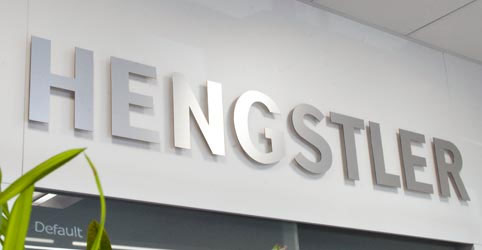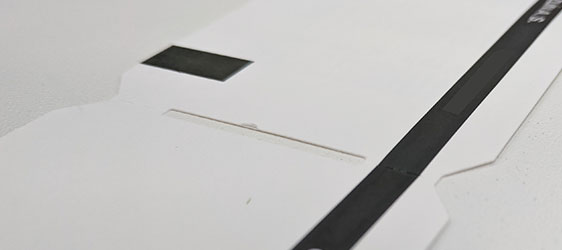
For paper types that require position techniques, black mark or hole mark sensing are techniques that can ensure correct position of the paper prior to printing. We differentiate between two types of positioning marks: black mark and hole mark.
A black area that is preprinted on paper or tickets and is used by the printer (in conjunction with an appropriate sensor) to make sure that the paper or document advances to the same, known point after every printout before it is cut. This is especially useful when using preprinted tickets where printed information must be in a specific spot.

Black mark printing is not needed when printing from a continual roll of white paper since it doesn’t matter exactly where the printing starts on the paper itself. Black mark detection requires the use of a reflective sensor. The sensor light will reflect off the white paper surface but stop reflecting when reaching the black mark. This signals to the printer that the black mark has been reached. Black Marks are placed on the paper during the converting process. They are typically located on the bottom side but can in rare cases be placed on the thermally coated side of the paper (where printing takes place).
An area of a ticket or printout that contains a hole and works the same way as black mark regarding advancing and positioning the paper (in conjunction with an appropriate sensor) after every printout. Hole mark detection generally requires the use of a through-beam sensor with a separate transmitter and receiver. The through-beam sensor can also be used in a manner similar to a black mark sensor. Instead of a black mark, a hole is used in the paper. The through-beam sensor is located on the centerline of the paper path. This is the only location it may use.
Ticketing applications typically use black marks or hole marks, as clear majority of the papers used are preprinted or require the information to be positioned at the same place with every printout.
Media capacity or paper roll size and the available space inside the kiosk determine how often paper must be loaded or how critical the application up time is. Using Dual, Triple or Multi-Feed units are a way of extending the time between paper roll changes. Multi-Feed units are widely and commonly used in ticketing applications such as ticket vending machines.
The HENGSTLER team is expert in matching printers to the application. Whether it’s gas pump receipts, bank statement printers, railway ticketing systems, kiosks, fire alarm systems, or just about anything else, we’ve seen it and can help locate and integrate the best-suited printer for the purpose needed. Moreover, we can support our customers effectively by offering tailor-made application projects. Contact us today with your application or challenge
The HENGSTLER team is expert in matching printers to the application. Whether it’s gas pump receipts, bank statement printers, railway ticketing systems, kiosks, fire alarm systems, or just about anything else, we’ve seen it and can help locate and integrate the best-suited printer for the purpose needed. Moreover, we can support our customers effectively by offering tailor-made application projects. Contact us today with your application or challenge